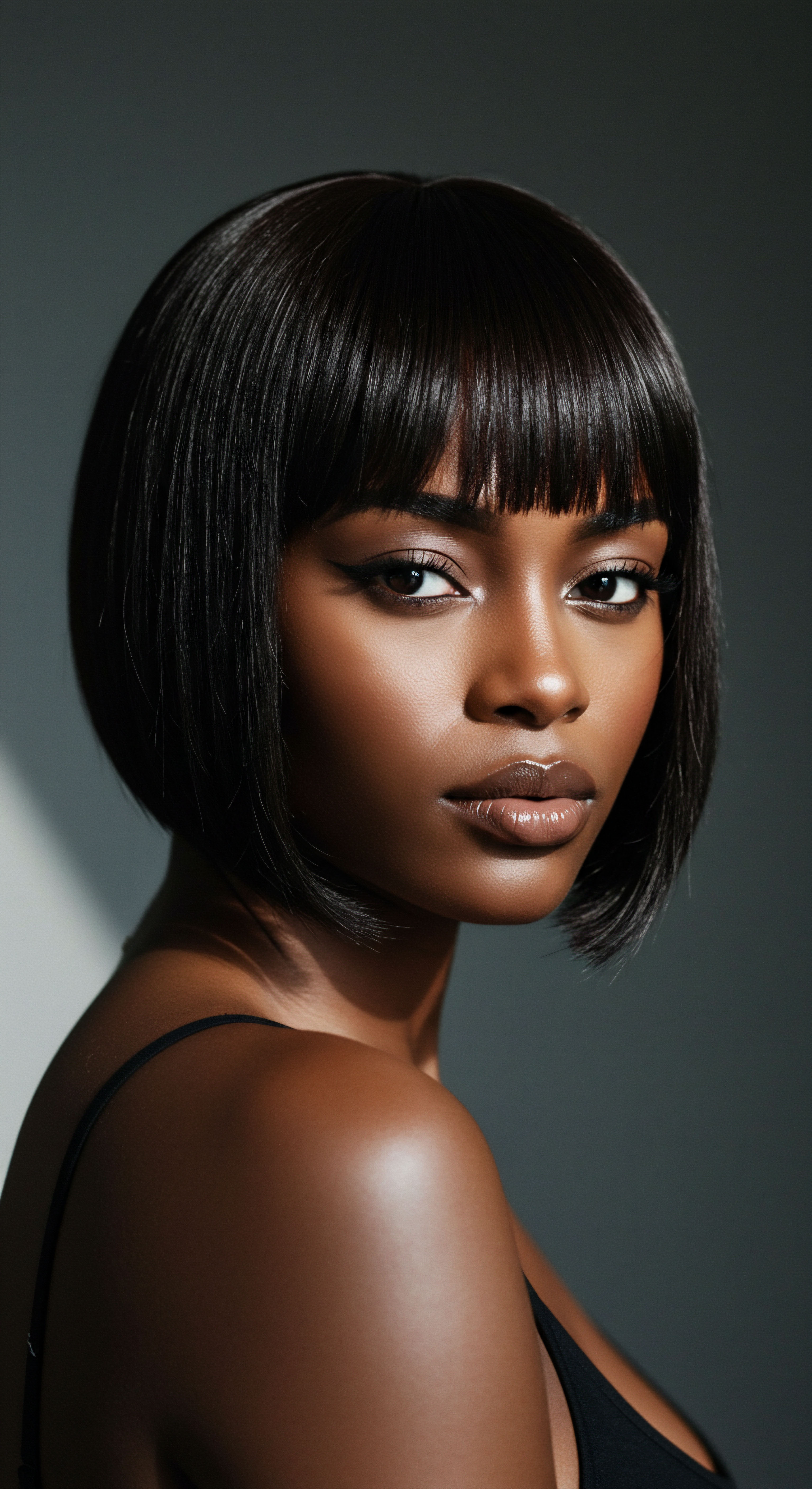
Roots
A quiet moment descends as dusk settles, a time when the world outside softens, and a gentle turning inward begins. For many, this transition from day to night carries with it an unspoken invitation to care for what lies closest to us, our very being, and for those with textured hair, this often includes a deliberate tending to their crowns. The nightly hair ritual, far from a mere chore, frequently serves as a subtle yet profound connection to generations past, a whispered continuation of practices rooted deeply in shared history and identity. This connection is not always overtly declared, yet its presence is undeniable, a quiet echo of ancestral wisdom.
The story of nighttime hair care for textured hair begins with an understanding of its inherent structure. Unlike straighter strands, curly and coily hair possesses a unique elliptical shape, leading to a natural tendency for dryness. The scalp’s natural moisturizing oils, known as sebum, encounter more difficulty traveling along the winding path of a curly strand, leaving it more vulnerable to external stressors. This biological reality, recognized implicitly across diverse cultures long before modern science articulated it, laid the groundwork for protective practices aimed at preserving moisture and preventing mechanical damage during sleep.
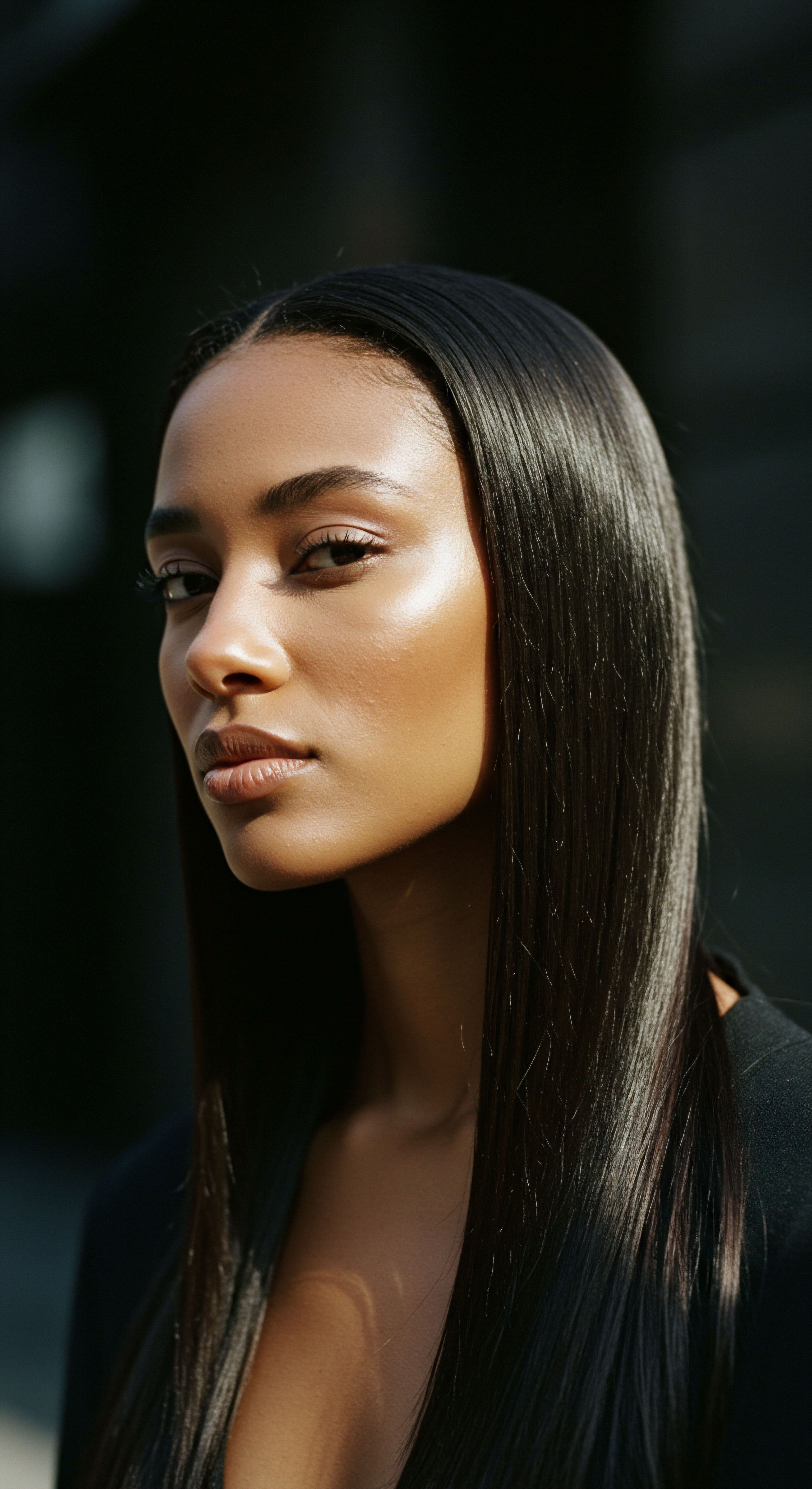
Hair’s Earliest Protectors
Across continents, communities developed ingenious methods to safeguard their hair as they rested. From ancient African civilizations to Indigenous peoples of the Americas and various Asian cultures, the recognition of hair’s vulnerability at night spurred practices that prioritized its preservation. These early methods often involved natural materials readily available from the land.
Shea butter, coconut oil, and other plant-derived emollients became foundational elements, applied to hair and scalp before sleep to provide a protective barrier against moisture loss and friction. The knowledge of which plants offered the most benefit was passed down, becoming a part of communal wisdom.
Nighttime hair care, for many, is a silent dialogue with history, a continuation of practices passed through generations to protect and honor textured strands.
In many West African traditions, for instance, the application of rich butters and oils before protective styles for sleep was a standard. This sustained the hair’s health in warm, dry climates. Similarly, Indigenous cultures frequently utilized native oils like jojoba and castor for scalp wellness, often combined with braiding or wrapping to shield hair from the elements and tangling during periods of rest. These were not simply cosmetic acts; they were acts of care, deeply connected to a holistic approach to well-being and a respectful relationship with nature.

The Fundamental Role of Covering
One of the most widespread and enduring practices in nighttime hair care across cultures is the use of head coverings. The evolution of the bonnet, for example, offers a compelling illustration. While European women in earlier centuries wore bonnets for warmth or modesty, their purpose shifted significantly within African and African-American communities. Here, the bonnet transformed into a critical tool for hair preservation, especially for textured hair types.
Smooth fabrics, such as satin or silk, became preferred materials due to their ability to minimize friction against pillowcases, thereby reducing breakage and maintaining moisture. This practical function gained deep cultural layers, becoming a symbol of identity and a connection to ancestral practices.
- Hair Anatomy ❉ The unique elliptical shape of textured hair makes it prone to dryness.
- Sebum Distribution ❉ Natural scalp oils struggle to travel along curly strands.
- Vulnerability ❉ Textured hair faces increased susceptibility to breakage and split ends.
The act of covering hair at night speaks to a universal understanding of protection, yet its cultural manifestations tell distinct stories. From the practical need to maintain elaborate daytime styles to the desire to safeguard hair from the elements, these coverings served a dual purpose. They were both functional tools for hair health and silent carriers of cultural memory, reflecting shared values concerning appearance, care, and identity.
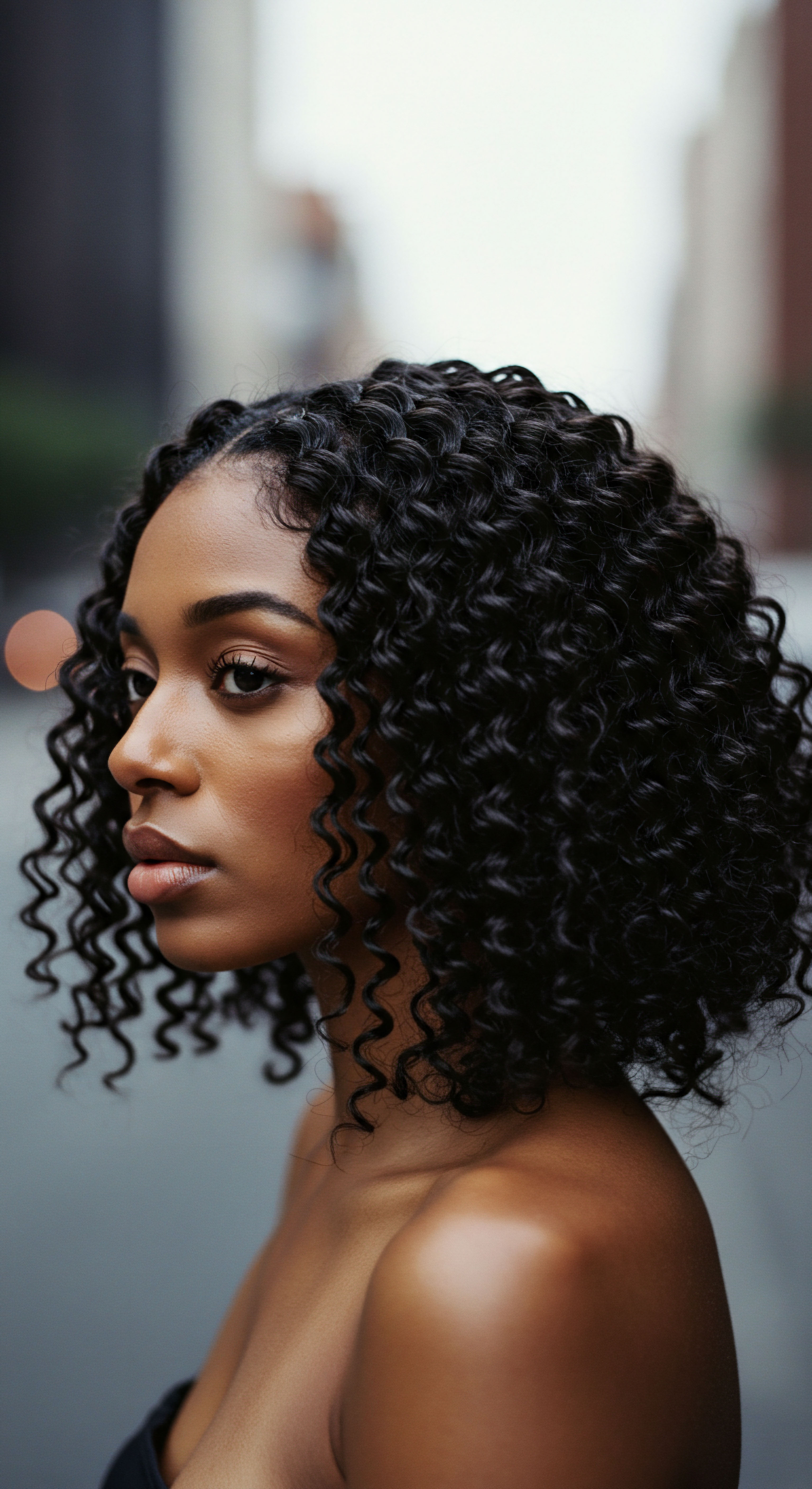
Ritual
As the day recedes, a sense of quiet expectation often settles, signaling a time for intentional acts of self-tending. For many, this includes the nightly hair care ritual, a practice that transcends mere grooming to become a deeply personal and culturally resonant experience. It is here, in the gentle application of oils, the methodical twisting of strands, or the careful placement of a protective covering, that practical wisdom and inherited understanding truly converge. This segment delves into the applied aspects of nighttime hair care, exploring how these deliberate practices contribute to hair wellness and carry forward a rich cultural legacy.

The Ceremony of Oiling and Massaging
The practice of hair oiling, particularly prominent in South Asian cultures, stands as a prime example of a nighttime ritual deeply intertwined with heritage. Known as Champi in India, this Ayurvedic practice, dating back thousands of years, involves warming herbal oils and massaging them into the scalp and hair, often left on overnight. This is not solely about hair health; it is a bonding experience, a moment of shared intimacy between generations. Mothers, grandmothers, and aunts lovingly apply oils to younger family members, passing down not only the technique but also a sense of care and connection.
The scientific underpinnings of hair oiling are now more widely appreciated. The massage stimulates blood circulation to the scalp, potentially aiding nutrient delivery to hair follicles. The oils themselves, whether coconut, sesame, or castor, help to seal moisture into the hair shaft, reducing dryness and breakage. This ancient wisdom, rooted in observed benefits, aligns with modern understanding of scalp health and hair strength.
| Cultural Origin South Asia (Ayurveda) |
| Typical Oils Coconut, Sesame, Castor, Herbal Infusions |
| Observed Benefits Scalp stimulation, moisture retention, reduced breakage, family bonding |
| Cultural Origin Ancient Egypt |
| Typical Oils Castor Oil |
| Observed Benefits Hair strengthening |
| Cultural Origin Japan |
| Typical Oils Tsubaki (Camellia Japonica) Oil |
| Observed Benefits Hydration, skin wellness |
| Cultural Origin These practices highlight a universal recognition of oil's protective qualities for hair. |
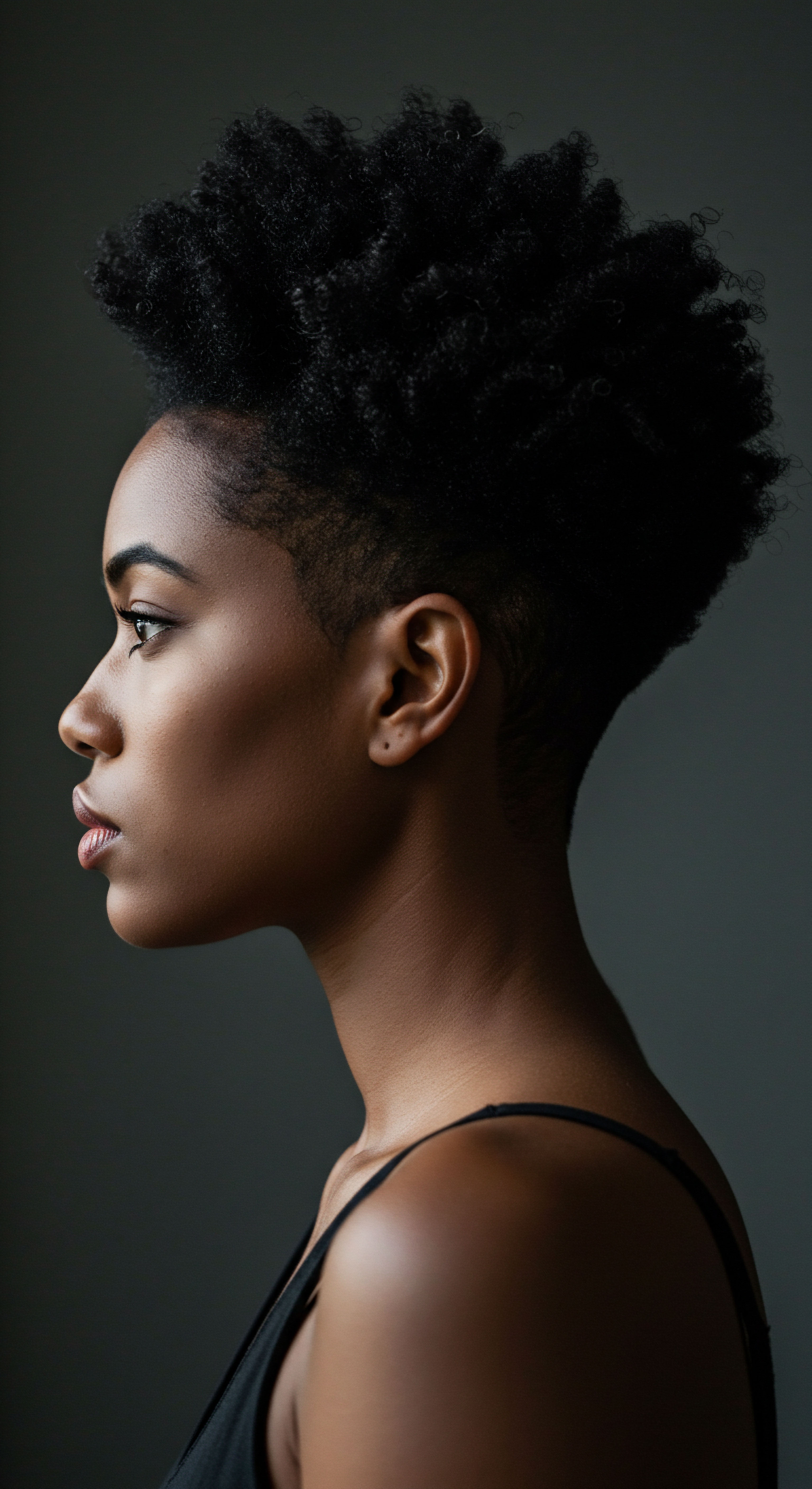
Protecting Strands Overnight
For those with textured hair, nightly protection is paramount. Cotton pillowcases, with their absorbent fibers, can strip hair of its natural moisture and create friction, leading to tangles, frizz, and breakage. This understanding has long driven the practice of using smooth coverings or specific styling techniques before sleep.
The choice to cover hair at night is a testament to an enduring understanding of textured hair’s delicate nature.
The modern satin or silk bonnet, a descendant of historical head coverings, provides a gentle environment for hair during sleep. It allows hair to glide against the fabric, minimizing friction and helping to retain moisture and preserve hairstyles. This practice is especially significant for individuals with highly coily or curly hair, which is inherently more susceptible to damage from mechanical stress.
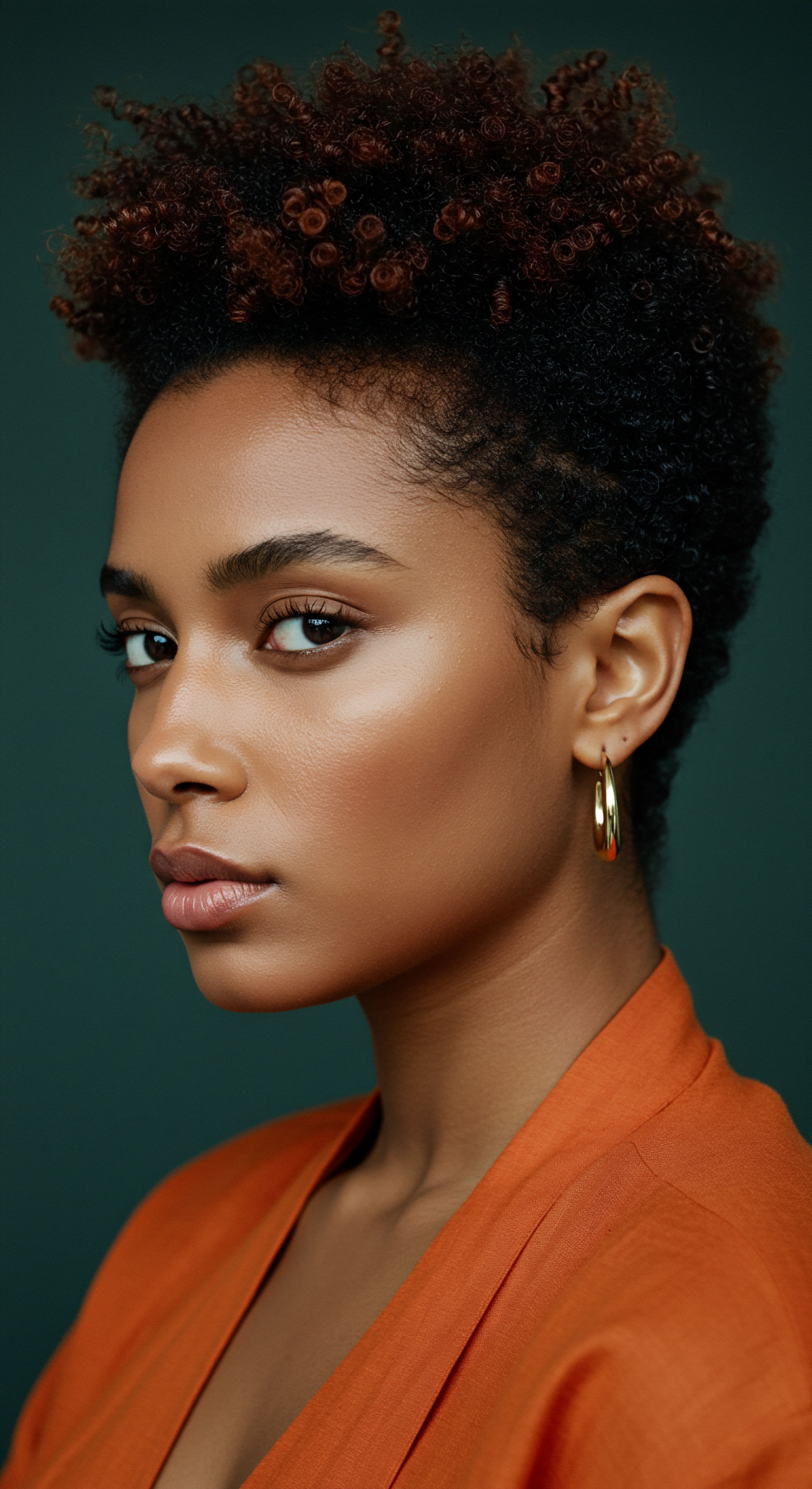
How Do Protective Styles Aid Nighttime Care?
Beyond bonnets, many cultural practices involve specific protective styles worn overnight. Braids, twists, and buns are not just daytime adornments; they are also strategic methods to consolidate hair, reduce tangling, and prevent individual strands from rubbing against surfaces. This reduces mechanical stress on the hair shaft.
For instance, the practice of braiding hair before sleep is prevalent in many communities with long hair traditions, from Native American tribes to African diaspora communities. This simple act can significantly lessen the likelihood of knots and breakage, preserving hair length and health over time.
The care taken to secure hair at night speaks volumes about its value within these cultures. It reflects a deep respect for hair as a living part of the self, deserving of deliberate attention and protection. These nightly acts, though seemingly small, collectively contribute to the longevity and vibrancy of textured hair, carrying forward a legacy of mindful care.
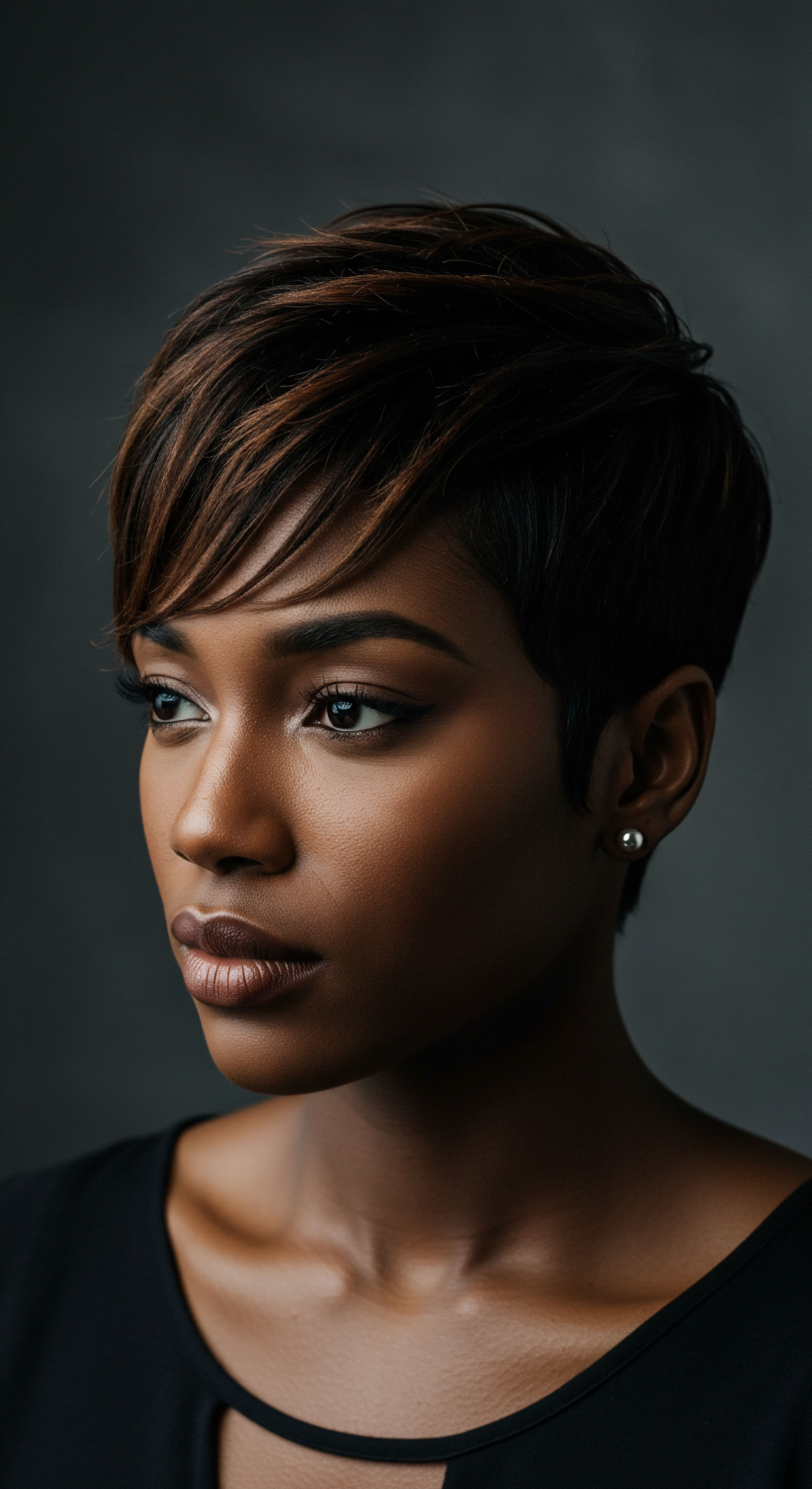
Relay
Consider the quiet strength held within a simple head covering, or the unspoken wisdom carried in the scent of an herbal oil. These nightly acts of hair care are not isolated events; they are profound expressions of cultural identity, resilience, and a deep-seated connection to ancestry. This section journeys into the more complex layers of this connection, exploring how scientific understanding intertwines with cultural narratives, and how historical challenges have shaped contemporary practices, particularly for textured hair.
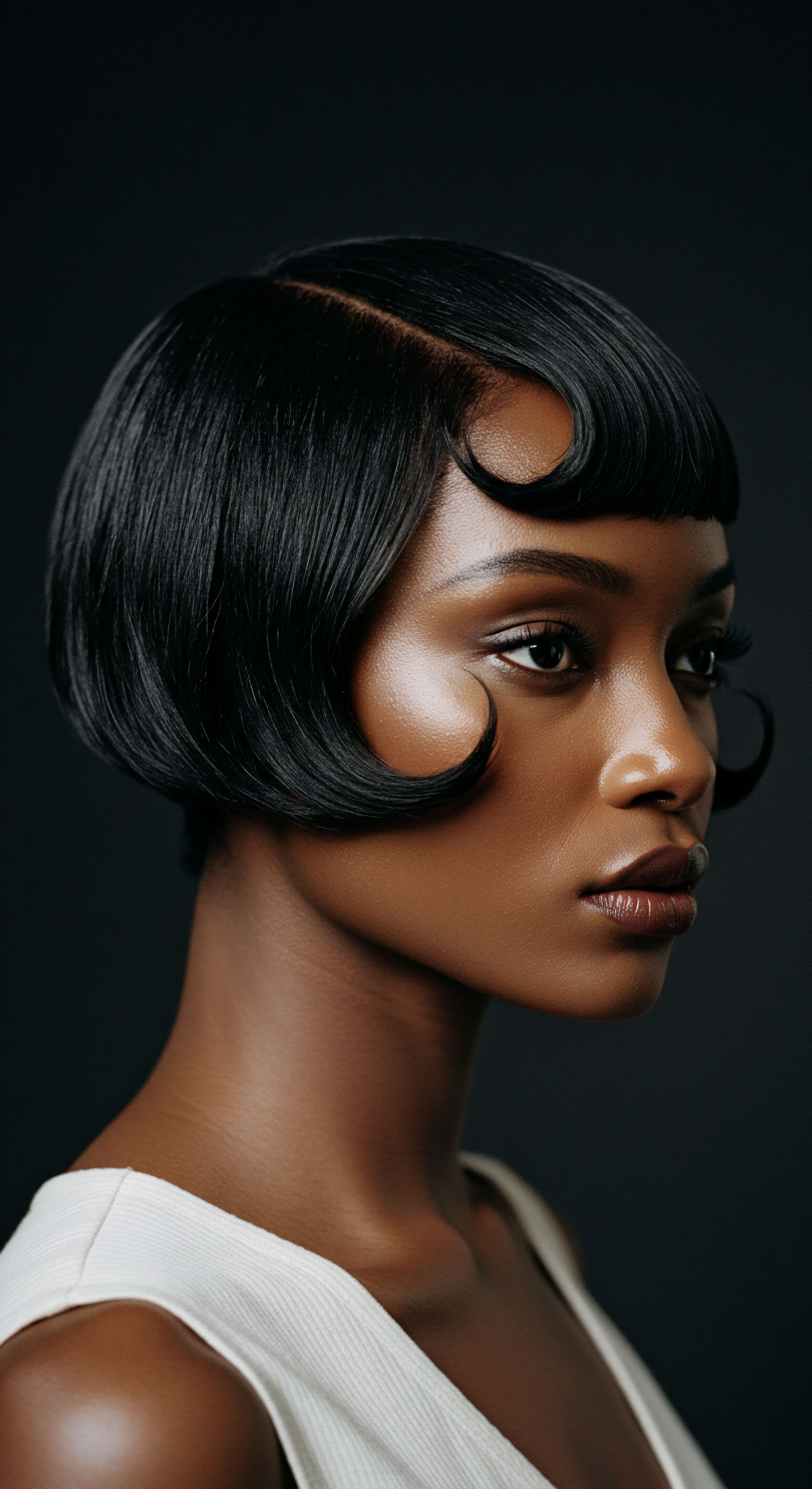
Cultural Identity and the Crown’s Protection
For Black and mixed-race communities, nighttime hair care practices, particularly the use of bonnets and headwraps, carry a weight of history that extends beyond mere protection. These items have served as symbols of resistance and cultural continuity amidst periods of oppression. During the era of enslavement in the United States, for example, laws like the Tignon Laws in Louisiana mandated that free Black women cover their hair, an attempt to diminish their perceived social standing. Yet, these women transformed the forced covering into an act of defiance, using vibrant fabrics and elaborate styles to assert their identity and communicate covert messages.
This historical context lends a powerful meaning to the modern bonnet. It is not simply a tool to prevent frizz or breakage; it is a symbol of Black beauty rituals, emphasizing the importance of hair care and preservation within a lineage that has fought to maintain its cultural expressions. The act of wearing a bonnet to bed becomes a daily affirmation of self-worth and a quiet homage to those who came before.
The bonnet, beyond its protective function, stands as a testament to Black women’s enduring spirit and a reclaimed symbol of cultural pride.
The significance of hair itself in Black identity is widely acknowledged. Academic literature points to hair as a unique and salient feature emphasizing Blackness and African roots, serving as a bonding experience within female communities. The transition to natural hair, often requiring specific nighttime care, symbolizes a process of identity negotiation and self-acceptance, a rejection of Eurocentric beauty norms that historically favored straightened hair.
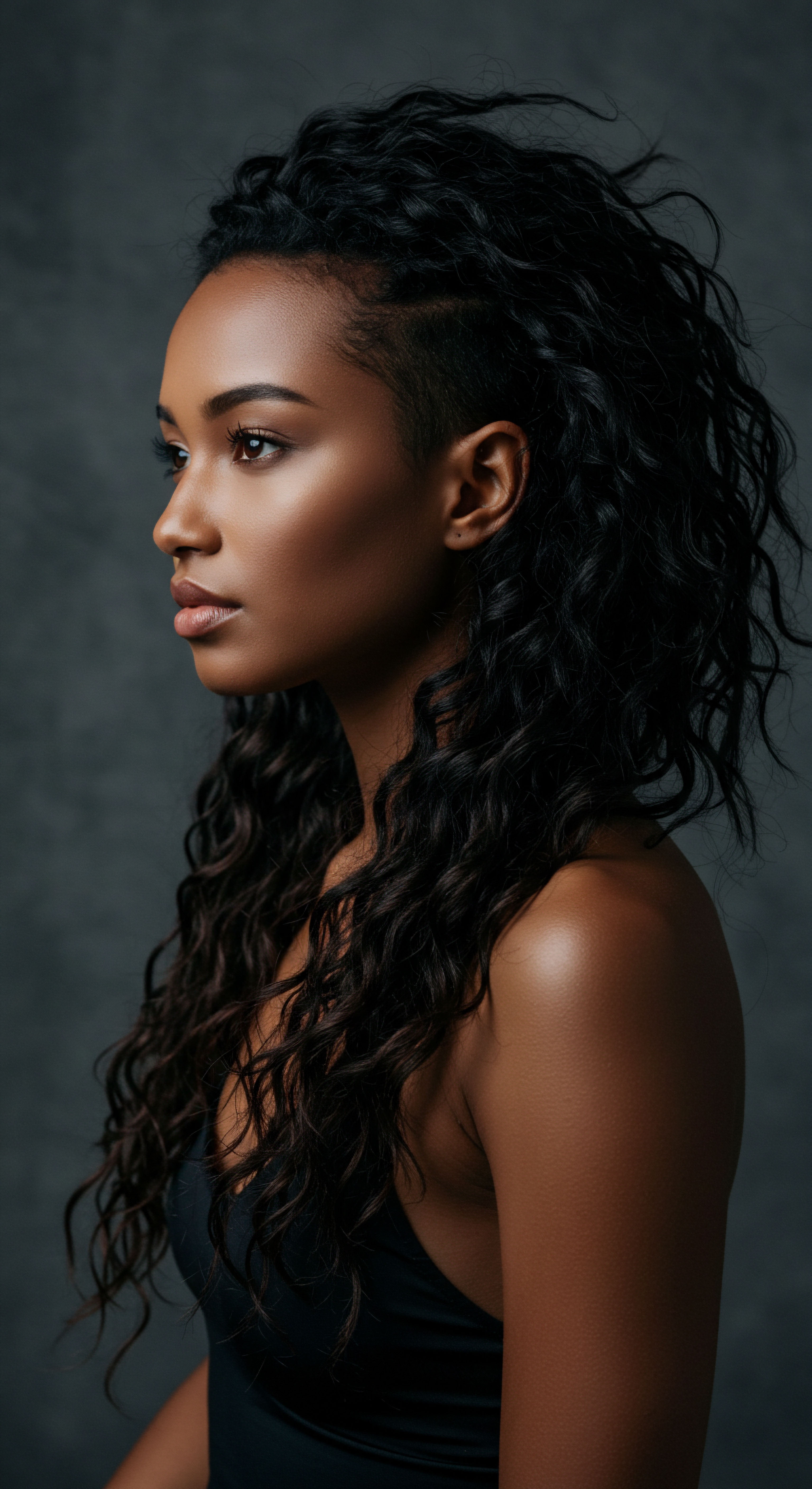
How Do Hair’s Physical Properties Influence Care Practices?
The inherent characteristics of textured hair also play a critical role in shaping care routines. Research highlights that afro-textured hair is more prone to dryness due to the tight curl pattern, which hinders the even distribution of sebum. This dryness, in turn, makes it more susceptible to breakage and tangles.
A study presented at the TRI/ITC Multi-Ethnic Hair and Scalp Care Symposium noted that a surprisingly high number, 70-80%, of African consumers believe their hair has medium-high porosity. Scientific data from the same symposium indicated that very curly hair does indeed swell more than straighter hair types. This swelling, a marker of porosity, suggests a greater capacity for water absorption but also a higher potential for moisture loss if not properly sealed. This scientific insight provides a foundational reason for the long-standing cultural practices of sealing moisture into textured hair at night, often with oils and protective coverings.
Consider the implications of this porosity. When hair swells, its cuticle layers lift, making it more vulnerable to damage from friction. This vulnerability is exacerbated during sleep when hair rubs against pillows. The widespread adoption of satin or silk sleep accessories, therefore, directly addresses this biophysical reality, minimizing the mechanical stress on the hair cuticle.
- Porosity ❉ Textured hair often exhibits higher porosity, impacting moisture retention.
- Friction ❉ Nighttime movement against rough surfaces can cause cuticle damage.
- Breakage ❉ Dryness and friction contribute to hair strand fragility.

The Modern Echo of Ancient Wisdom
The continuity of these practices across generations, even as scientific understanding progresses, speaks to their enduring efficacy and cultural resonance. What began as intuitive responses to hair’s needs, honed through centuries of communal knowledge, finds validation in contemporary research. The act of oiling, wrapping, or braiding hair before sleep is not merely a habit; it is a dialogue between the past and the present, a testament to the power of inherited wisdom.
This intergenerational transfer of knowledge extends beyond techniques to include the underlying philosophy of care. It emphasizes patience, consistency, and a deep respect for the hair’s natural state. This holistic approach, valuing both physical health and cultural connection, positions nighttime hair care as a significant cultural practice, a quiet ceremony that strengthens bonds and preserves heritage with every passing night.
| Porosity Type Low Porosity |
| Cuticle Behavior Tightly closed, resists moisture absorption |
| Implications for Night Care Requires steam or warmth to open cuticles for product absorption before sealing. |
| Porosity Type Normal Porosity |
| Cuticle Behavior Balanced, absorbs and retains moisture well |
| Implications for Night Care Benefits from consistent moisture and gentle protection. |
| Porosity Type High Porosity |
| Cuticle Behavior Open, easily absorbs but quickly loses moisture |
| Implications for Night Care Requires strong sealing agents and friction reduction to prevent moisture loss and damage. |
| Porosity Type Understanding hair porosity helps tailor nighttime routines for optimal health. |
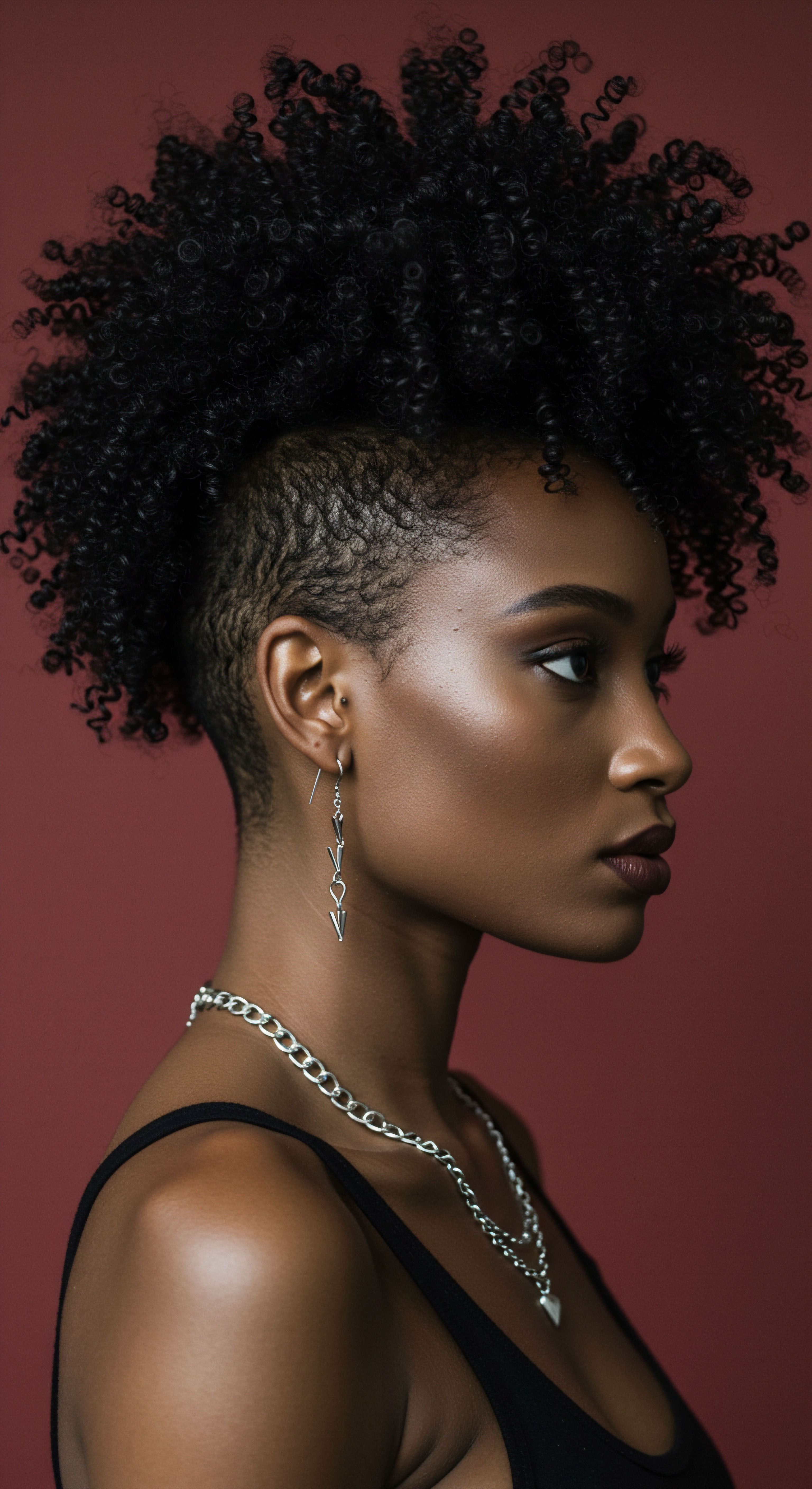
Reflection
As the day concludes and the world prepares for rest, the cultural practices surrounding nighttime hair care stand as quiet, powerful affirmations. They are more than routines; they are enduring conversations with history, expressions of identity, and acts of profound self-tending. The soft rustle of a satin bonnet, the comforting scent of a beloved hair oil, the rhythmic parting of strands for a protective braid—each gesture carries the weight of generations, a testament to resilience and the persistent honoring of heritage. These nightly rituals, often performed in solitude, connect individuals to a vast, shared human experience, a legacy of care that continues to unfold, strand by delicate strand, into the quiet promise of tomorrow.
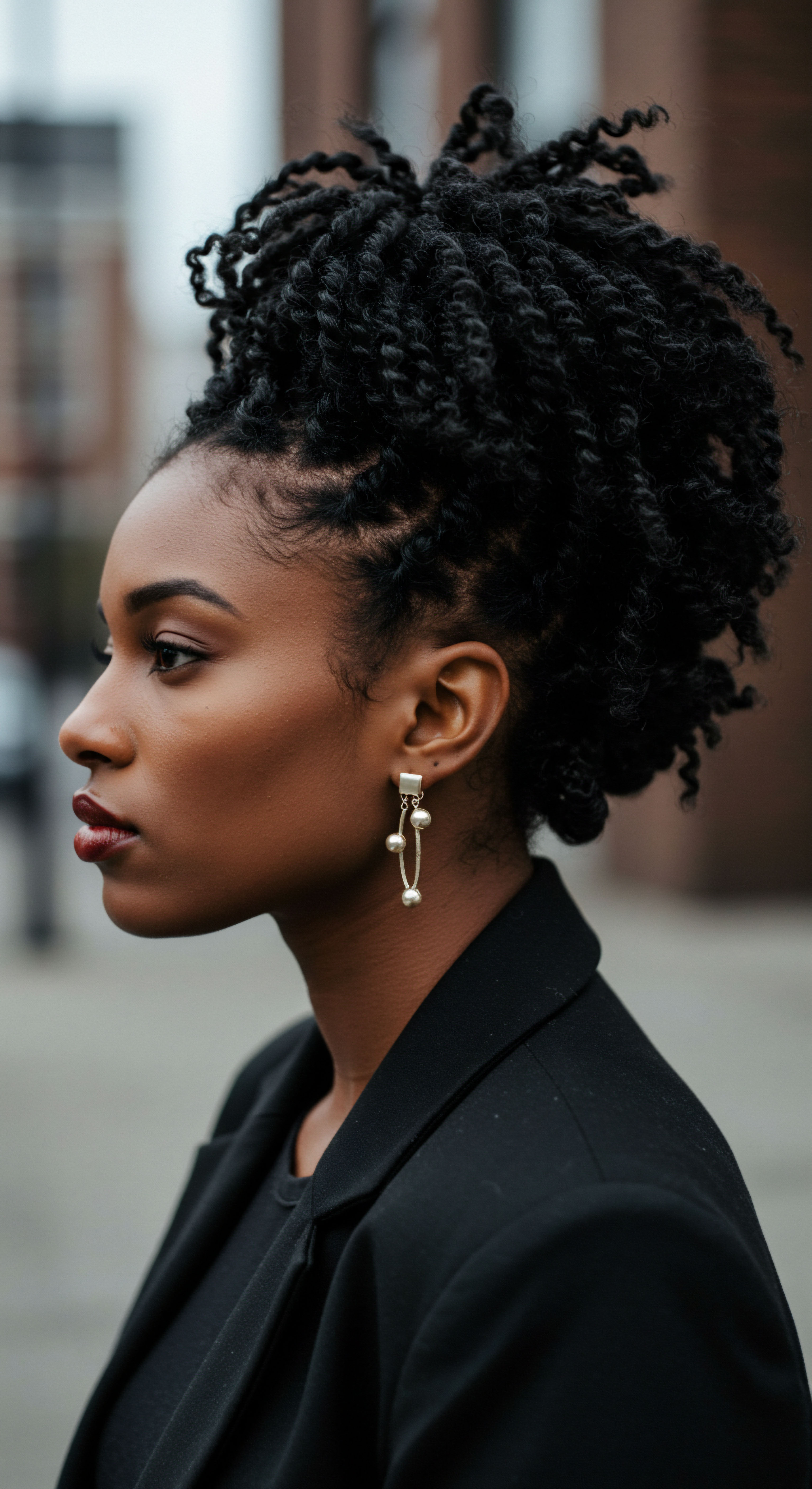
References
- Ninkus. A Bedtime Essential, Not a Daytime Accessory The Historical Role of Bonnets. 2024.
- BONNET QUEEN. The silk bonnet has a rich history. 2024.
- Brown History. The Bonding Ritual of Hair Oiling. 2023.
- Byrdie. The Significance and History of Bonnets. 2022.
- Helix Hair Labs. THE HISTORY OF THE HAIR BONNET. 2023.
- Asian Lifestyle Design. Asian Cultural Beliefs on When to Shampoo. 2010.
- Jelani Travel. Head Wrap History From South Africa to Global Fashion.
- Indagare Natural Beauty. The Ritual of Hair Oiling and Why You Need to Try It. 2024.
- Wikipedia. Bonnet (headgear).
- Reddit. Taking care of hair. 2023.
- NYSCC. Hot Topics in Textured Hair Research Hair Porosity and Hair Braiding Damage. 2020.
- PubMed Central. Porosity at Different Structural Levels in Human and Yak Belly Hair and Its Effect on Hair Dyeing. 2020.
- Chatelaine. Hair Oiling Is More Than A Trend—It Connects Me To My South Asian Roots. 2023.
- Turbie Twist. Head Wraps and Culture What You Need to Understand.
- Obé Headwear. Significance of headwraps Hair care. 2024.
- Africa Facts Corner. The History and Culture of African Natural Hair. 2024.
- DigitalCommons@Fairfield. A Cultural History of Hair in Antiquity.
- Quora. Is oiling my hair in the morning and night regularly good or bad? 2018.
- Gift Hamper Hong Kong. Understanding the Tradition of Hair Dressing Ceremonies. 2024.
- Medical News Today. Biracial hair types What to know. 2021.
- Salon George De Mello. How Japanese Take Care of Their Hair Complete Guide.
- Cécred. Understanding Hair Oiling History, Benefits & More. 2025.
- PMC. Techniques Used for Hair Style Maintenance while Sleeping May Be a Risk Factor for Traction Alopecia. 2021.
- Obscure Histories. Champi The ancient Indian practice. 2024.
- Library of Congress. Heavy is the Head Evolution of African Hair in America from the17th c. to the 20th c.
- British Association of Dermatologists. Caring for Afro-textured hair.
- AOTA. AOTA’s Guide to Culturally Inclusive Hair Care Services and Incorporating Cultural Humility Into Practice.
- FSU The Voice. African American Hairstyles and Ancient African Tribe History. 2017.
- Hair Care Practices from the Diaspora A Look at Africa, America, and Europe. 2025.
- NYSCC. An Overview on Hair Porosity. 2020.
- Native American Pow Wows. Natives Don’t Have Bad Hair Days Care For Your Braids. 2013.
- Clinikally. Impact of Sleep Deprivation on Hair Health. 2024.
- Science News Explores. Science works to demystify hair and help it behave. 2024.
- American Academy of Dermatology. 10 hair care habits that can damage your hair.
- Érudit. The role of hair in identity processes and contestations of Black women in Sweden Daniel Therre. 2022.